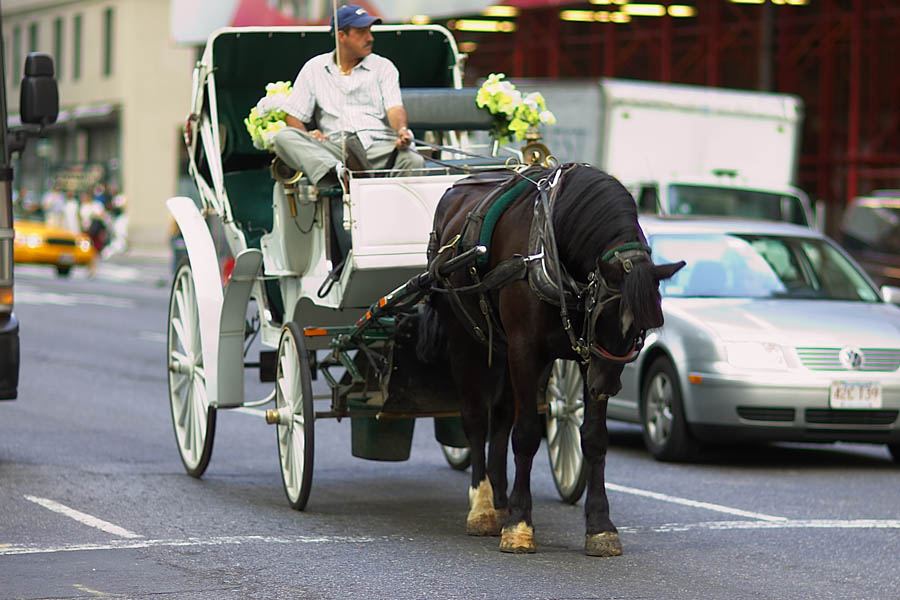Friday, January 20, 2006
When will NYC get it?

Many horses that end up pulling carriages through city streets are breakdowns from the harness racing tracks. Standardbreds are often trained to race by being tethered to the back of a truck that drives increasingly faster. But standardbreds are much smaller and lighter than traditional draft horses and are not accustomed to pulling heavy loads.
Most cities have only minimal regulations governing working conditions for carriage horses, and these regulations are rarely enforced. Carriage horse operators know all the loopholes in their city's laws.
Horses and heavy traffic can be a deadly mix. Despite carriage horse operators' claims, most horses are not comfortable working among cars and trucks. Many accidents, injuries and even deaths have been caused by horses becoming spooked in traffic. A survey of national carriage horse accidents revealed that 85 percent of all accidents were the result of an animal spooking.
Conditions for carriage horses usually aren't very good off the streets. Stables have been found to have exposed stalls with no hay or other bedding, stall floors covered with urine and manure, poor ventilation in the stables, and horses that had no free access to water. Has City Council asked where and how these horses would be kept? Who would make sure the stable conditions are satisfactory, the already overworked humane society?
People around the country are increasingly recognizing that it's the carriage horse industry - not just the horses - who are taking them for a ride. Pressure from concerned residents has resulted in bans on carriage horses in a growing number of cities, including Palm Beach, Fla.; Santa Fe, N.M.; and Las Vegas.
